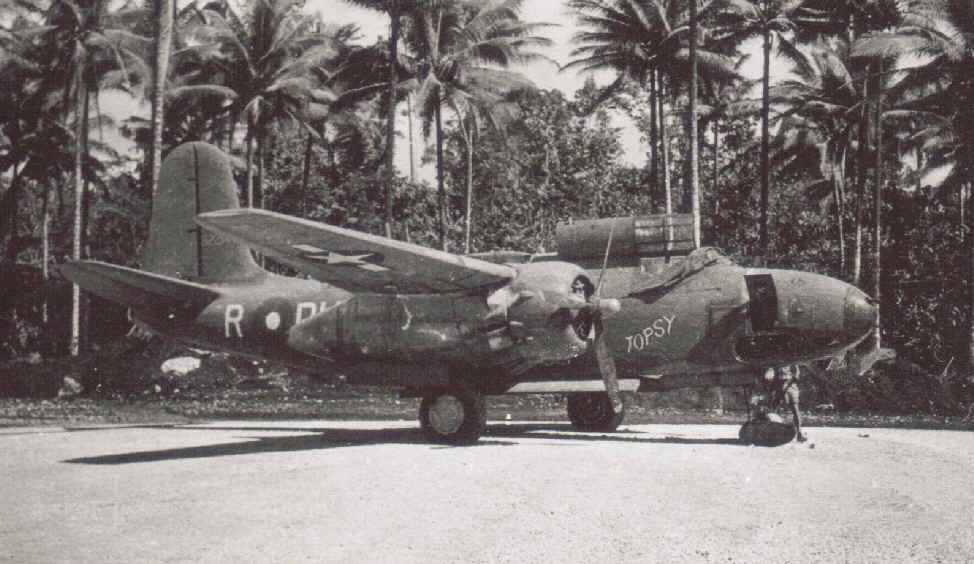
Image du Jours -- World War II
About this Havoc / Boston - WWII #3 of 23.

(Image from Heckman-Cashion Collection)
Unappreciated Little Workhorse
I don't know how many have read my story about a piece of a throttle from a particular Hawker Hurricane, or the details of the documentation, but I will just say that the pilot of that Hurricane, Walker-Smith, survived the fighter's crash, and though wounded, parachuted safely. Walker-Smith (with two others) subsequently died when an inspection plate from the Havoc he was flying came free and lodged in the rudder shortly after take-off. The Havoc spun into the ground.
The Havoc in today's posting, like most aircraft photos, is rather interesting and there is enough information that good research could be done -- though the tail-number cannot be seen.
I would think the photo was taken in New Guinea (Morotai) and the first thing I noticed was the Australian roundel on the fuselage but the USAAF emblem on the wing. The primary mission of this Havoc, "Topsy," was most likely shelling and bombing Japanese shipping, for which, it was well suited. Bomb-bay doors are open as is the armorers door at the nose.
Douglas developed the A-20 ("A" for "attack") in 1936 at their own expense and then between 1938 and 1944 built 7,385 in several variants under government contract. The twin-engined light bomber served with the French, British, Australian, American, and Soviet air forces -- in that order. The plexi-nosed variant was known as the Boston in Britain, and when the guns were mounted in a full-metal nose for night-fighting, they became the Havoc. In the US, they were known as the A-20, P-70, and F-3 -- in France, as the DB-7 (Douglas Bomber? Dive Bomber?).
There were two models of the DB-7 and all 960 in this production run were destined for the French but, as you know, the French left WWII prematurely and most of the DB-7 and DB-7As went to Britain. This order was filled before A-20s were even manufactured for the USAAF.
The first A-20 made for the USAAF was the A-20C having more powerful engines than previous variants and it entered combat in May '42. The P-70 was a night-fighter version; the F-3, a photo-reconnaissance model.
The model with the most production was the A-20G, which served with the USAAF and Soviets only, the Soviets getting them in great numbers. Besides the engines, the G model (and H) had an unglazed nose where it received various combinations of armament. They were used mainly in the Pacific.
I am surprised that the final variants were the J and K with a return to the glazed nose. This was necessary for it to serve as a conventional bomber. (The G and H models had used a skip-bombing technique against shipage.)
The A-20 was a fast little bomber doing 341 mph and it could carry 4,000 pounds of bombs. Being a low-level bomber, it caught a lot abuse from ground fire, but it was rugged and held up well.
Some unglazed nose, A-20s were pretty much a large fighter plane and flown as such in strafing missions. The pilot sat in a single seat with all sorts of firepower combinations. He had a navigator behind him who relieved him of any worries about how to get to and from target areas, and he had a gunner to help discourage attacking fighters. Those with glazed noses were for more conventional medium altitude bombing and on those aircraft, there would be the 4th crewman: bombardier. The long, cockpit entrance is open in the image.
The later twin-engine Douglas bomber, A-26B Invader, bore very little resemblance to the A-20 when they were compared side-by-side. The Invader was the last of this type, serving in Korea and Vietnam.
I would think the A-20 Havoc in this image is a G model although I don't know for sure.
Ken Cashion